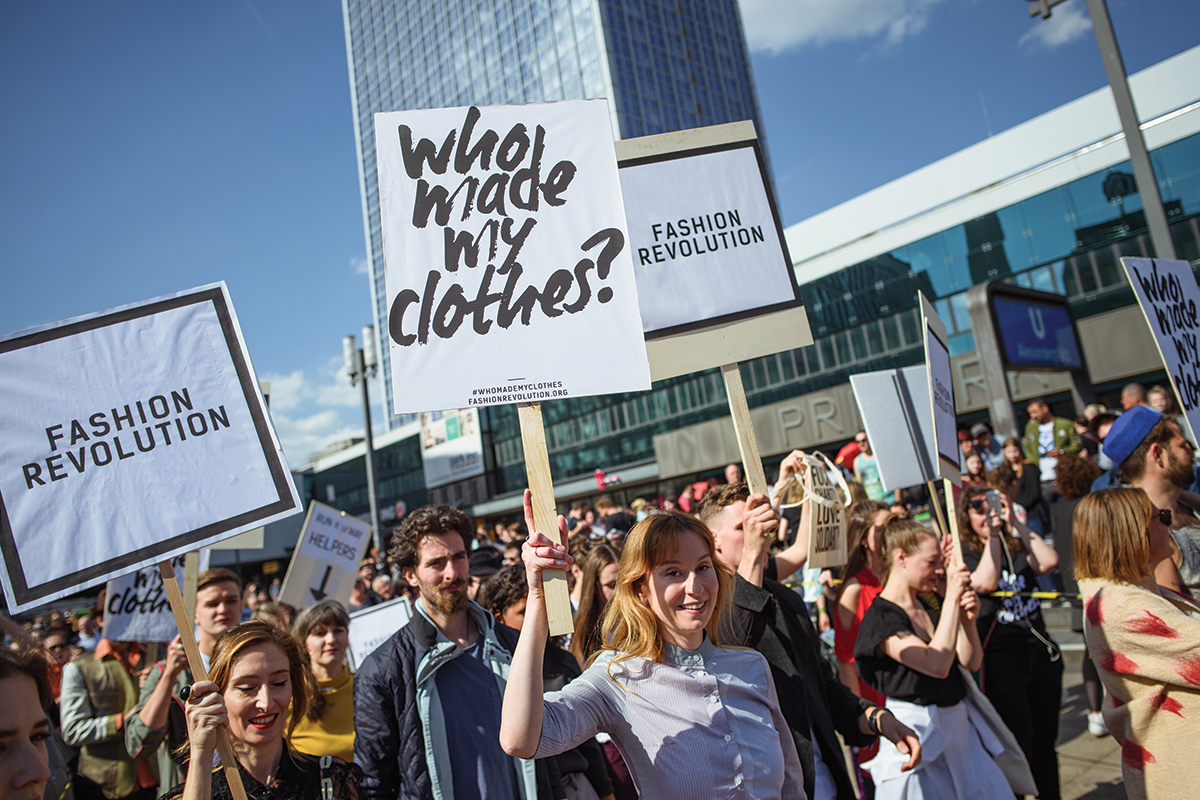Gun shots, humanitarian crisis, environmental disasters. Sometimes the world is not a pretty place. But in the midst of the fire and the dust, we can count on fashion’s to hand to help rebuilt it, brick by brick.
Gun shots, humanitarian crisis, environmental disasters. Sometimes the world is not a pretty place. But in the midst of the fire and the dust, we can count on fashion’s to hand to help rebuilt it, brick by brick.

Fashion Revolution Week, Berlin. ©Getty Images
Fashion Revolution Week, Berlin. ©Getty Images
From the ground up
“We expect fashion to change over the course of a decade. What was once fresh and exciting is often, ten years later, stale and slightly embarrassing (or, if our current obsession with the early 2000s is anything to go by, already classed as solid gold vintage). But throughout the decade we’re about to leave behind, more has shifted than just silhouettes; we’re waving goodbye to the 2010s with a completely overhauled perception of the industry. Sustainability is no longer a fringe issue within fashion but the most defining challenge – and opportunity – of our time.” The words were written by Sophie Benson in an article published in AnOther, back in December 2019, that began with a violent reminder of one of the most devastating disasters that the fashion industry has memory of – the collapse of the Rana Plaza factory in Dhaka, Bangladesh, that killed more than 1,100 people and left more than 2,500 injured. From the wrecks of the fourth largest industrial disaster in history, Fashion Revolution – a global movement comprised of players and citizens of the world who share a goal of transforming the fashion industry into a clean, safe, fair, transparent and accountable space – was born.
Most popular
.png)
.png)

Relacionados



.jpg)

